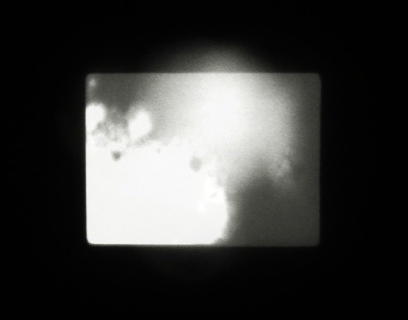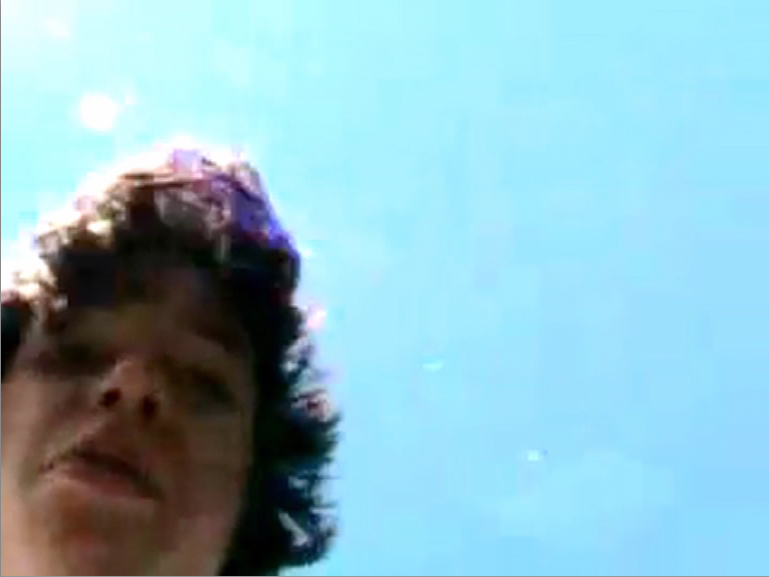
“Un cinéphile est quelqu’un qui attend trop de choses du cinéma. Qui attend que le cinéma soit le terrain sur lequel va se jouer son propre rapport à son image. Des cinéphiles, il y en a toujours eu et il y en aura encore longtemps, des gens qui demandent à l’image un peu plus que ce qu’elle peut ‘donner'”.
– Serge Daney
Gonzo Circus magazine has just published the first part of an article I recently wrote (in Dutch, available here) about film criticism and cinephilia. The article (perhaps more of a loose compendium of thoughts and musings) was written quite impulsively, partly in reaction to the débacle around the Cannes palmares (particularly Apichatpong Weerasethakul winning the Palme d’Or with Loong Boonmee raleuk chat), which showed just how fragmented contemporary film criticism really is. While magazines such as Cinemascope and Cahiers du Cinema wrote ecstatic reports about the triumph of their “golden boy” (the cover of the recent Cahiers read “Apichatpong, une palme de rêve”, Cinemascope raved about the “Apichatpalme” as the ultimate symbol of “the year we made contact”), mainstream journalists were generally unhappy and disturbed. How to communicate to their “audience” that a relatively “unknown” cineaste with a background in architecture and visual arts, and a name hardly anyone cares to pronounce (Wee-ra-se-tha-kul – but you can also just call him “Joe”) won one of the most prestigious awards in world cinema? How to explain his work, that draws as much from classical cinema (Jacques Tourneur) and avant-garde film (Bruce Baillie) as it does from Thai soap-opera’s and Boedhistic fables, resulting in a singular cinematographic world where the everyday and the mythological, reality and fantasy fuse in a complex meditation on memory, reincarnation and obsession? Most journalists didn’t even bother. In Flanders/Belgium, at least two newspapers headlined “boring Thai film wins Golden Palm”, while the self-proclaimed “quality” newspapers basically wrote the same thing, using a slightly more expansive language (hilarious quote from de Morgen’s Jan Temmerman : “…one’s dream is another man’s nightmare”).
Of course, this paradigm – delivering infotainment rather than sceptical analysis – is a problem integral to the whole print media business, as documented in Nick Davies’ book Flat Earth News. As it happens, the other day the University of Leuven published the results of a research, which state that 75% of all the articles in Flemish “quality “ newspapers partly or completely consist of pre-fabricated and/or PR-related material. “The mass-production of ignorance” that Davies finds so repulsive resonates with the proliferation of “storytelling management”, a concept that stems from the marketing industry (see Naomi Klein’s No Logo) but has over the past decennia infiltrated in diverse levels of society, in the form of branding, propaganda and post-political campaigns. These mechanisms of communication and control – cynical lowpoints are the mechanisations around the two Gulf wars – are meticulously analysed in the book Storytelling: La machine à fabriquer des histoires et à formater les esprits (2008) by Christian Salmon, who talks about the rise of a new “narrative order”. The stories we’re being told, he writes, format the imagination, instrumentalise emotions, model opinions. No doubt the dominant media play an important role in this evolution. The hollowing out of journalistic norms and values is also visible in film journalism, which is based more and more on human-interest stories and scoops. That’s why Tom Cruise’s coming-out as a Scientology fanatic in 2005 got more coverage than Spielberg’s War of the Worlds – and way more than the eruptions of violence in Darfur, that cost the life of more than 400.0000 people.
And then there’s that other aspect of the widely discussed “crisis” of journalism: the disintegration of the “professional” status and the lay-off of thousands of journalists worldwide. Sure enough, the unstable economical status and fundamental identity crisis (the Internet, dear…) of the traditional mass media are easily to blame here, although it’s also safe to say that the (film=media) industry doesn’t mind the “middle-man” being deleted from the communication process. Isn’t it easier and safer to just print an ad instead of a “critical” piece on a movie? Why bother at all? What remains are nothing more than cheap tastemakers, implicitly or explicitly sponsored by an industry which shows nothing but contempt for the cinema lover. So then, I ask, where is the beating heart of cinephilia today? What is left of the cinephile moral, the mission to counter the anesthetic effect of the cinematographic experience and the passivity of the identification process (with the characters or the cineaste) with the activity of critical thought? The ethics of the cinephile, wrote Serge Daney – “ciné-fils” par excellence – is an “impossible flirt”, informed by a firm belief in the power of cinema to show and establish a relation with the world, but at the same time by a resistance against this unique art form, which has risen out as an industry of spectacle amidst a global marketplace of interchangeable images. This evolution is what Susan Sontag had in mind when she announced the demise of cinephilia. Once, she wrote on the occasion of cinema’s 100th official birthday (but actually the birthday of the first commercial projection), cinema had its true apostles, but do they still have a place in a entertainment cloud filled with decadent en hyperindustrial movies? If cinema could arise from its ashes, it would be through the establishment of a new sort of “cine-love”. And now, 15 years after Sontag wrote her last article, about the Abu Ghraib affair – in which she pleaded for a (re)consideration of the relation between image and reality – there seems to be a new kind of burning love.
Perhaps it’s time for “Cinephilia Take Two”, thus wrote Thomas Elsaesser in his essay ‘Cinephilia or the Uses of Disenchantment’. He was not the first to make note of the possibility of new ideas and forms of cinephilia. It was notably Jonathan Rosenbaum who saw, in the 1990’s, a new transcultural generation of film lovers and critics blossoming, feeding on the proliferation of new distribution channels, media and festivals, far beyond academic and institutional walls. He recognized in programmers, critics and teachers such as Nicole Brenez, Alexander Horwath, Adrian Martin and Kent Jones a collective sensibility, free from cultural pessimism, market thinking and postmodern irony. Here was what seemed like the beginning of a movement that not only wanted to upgrade and reevaluate existing paradigms and theories, but also felt the need to develop and explore new tools and concepts, without concern for political correctness or neo-puritanism, with a sense of wonder and curiosity that extended well beyond the borders of alternative knowledge domains. Now, 13 years after Rosenbaum published the first letter of what became a whole series (published in Trafic, later compiled in the book Movie Mutations), now that the walls around the old cinema regime have crumbled down beyond recovery, this need for fresh perspectives and dynamic energy forces feels more urgent than ever.
“Goodbye Cinema, Hello Cinephelia” is the title of the new book Rosenbaum is working on. He’s right of course: cinema is no longer what it used to be. But the flirtations with the “end of cinema”, in the work of many critics and filmmakers since the 1990’s, have never implied its disappearance, rather the loss of its symbolic force. Cinema as a collective passion and memory, at the same time popular art and intellectual pleasure: that idea seems to have faded. Besides, as Chris Marker once said, quoting Godard, “cinema is that which is bigger than us – you have to lift your eyes up to it”. Now that we’re no longer watching films, but rather “databases” (dixit Geert Lovink), cinema has lost part of its essence. The digitisation and endless reproduction and distribution of the moving image means that film history is available to everyone with an internet connection and/or media player, but it also implies the loss of the classic cinema culture. At the same time, we’re all eagerly looking towards the Internet as the key to the necessary renewal of cinephilia. Looking for Robert Bresson’s obscure slapstick comedy or that infamous 12-hour long masterstroke by Jacques Rivette? What about the wonderful, insightful letters Stan Brakhage and Hollis Frampton sent to each other? Or English translations of Daney’s articles? If you dig deep enough, you’ll find it on the Web. But that’s not enough, is it? How do we go beyond mere compulsive consumption and accumulation? How can we make the paradigms of network culture – including “searchability” and “instant replay” – our own and use them to develop new forms of thinking and talking about cinema, as an antipode for the mores of the contemporary media-user, who seems to be stuck in a continuous preview-mode?
Make no mistake: there is (after)life on the Web. It does not only open (legal or illegal) pathways to an ever expanding archive of (digital copies of) cinematic works, it also functions as a safe haven for reflection and criticism. While traditional filmmagazines such as Andere Sinema (in Belgium) and Balthazar (in France) were abandoned a few years ago, and old values such as Cahiers du Cinéma or Sight & Sound have lost a major part of their relevancy and energy, on the Internet a wealth of film critical resources has appeared. There are excellent netzines like Senses of Cinema and Rouge, but perhaps even more important is the blogosphere, where you can find oldtimers like David Bordwell as well as “amateurs” like Girish Shambu (who’s actually a professional chemical engineer). The multimedia platform Mubi (formerly the Auteurs) is also an interesting case of “cinephilia 2.0”, as it profiles itself as an “online cinematheque”, with an excellent selection of films (often available before the DVD release) on offer, that tries to integrate an interactive and participatory dynamic with the help of all sorts of social networking tools. And so the Web develops itself as a space where various “gaps” can be bridged: between image and word (see Raymond Bellour’s wonderful analysis of Ritwik Ghatak’s Meghe Dhaka Tara – which I saw just recently at FID Marseille), between different cultures (take, for example, Criticine, based in the Fillipines, which maps cinema culture in South East Asia), but also between film lovers of all generations and backgrounds (read the comments on Dave Kehr’s blog). But again, is it enough? Let us remember that cinephilia consists of an ensemble of social practices. Daney put cinephilia in the tradition of griots: “If no-one speaks anymore, no-one will see, because we can’t see things very well unless we can say them…”. Cinephilia is about speaking and reaching out, about constructing a message, putting it in a bottle and throwing it into the open sea, in the hope someone will read, prolong and maybe return it. But it’s also about sharing (a sense, a view, a rhythm), friendship, love, and – let’s not forget – resistance: perhaps the only ways to bridge the chaos of the current infosphere.
The cinephile? “He who in vain keeps his eyes wide open but will tell no one that he couldn’t see a thing; he who prepares himself for a life as a professional ‘watcher,’ as a way to make up for his tardiness, as slowly as possible.” Daney again – always him – referring to the images each of us live with, the images each of us has learnt to live with, which we have once watched and are now watching us. These are the moments that constitute the primitive scène of every cinephile: the scène “in which he wasn’t present and yet it was entirely about him”. In one of his last and most touching pieces, Le Travelling de Kapo (1992), Daney wrote about his faithful compagnons-de-route: films like Alain Resnais’ Nuit et Brouillard or Alfred Hitchcock’s Psycho, who supplied the images that have haunted him his whole life. In the same piece he also traced the birth of his cinephilia to an article by one of his mentors, Jacques Rivette: a review of Gilles Pontecorvo’s Holocaust-drama Kapo. In it, Rivette described only one scène: “Search for the shot where Riva commits suicide by throwing herself on electric barbwire: the man who decides at this moment to make a forward tracking shot to reframe the dead body – carefully positioning the raised hand in the corner of the final framing – this man is worthy of the most profound contempt.” This text was Daney’s zero point, the axiom that informed his thinking and writing about cinema. In this article – about a film he has never seen – Daney found everything that would continuously feed this cinephilia: the political discourse of the Cahiers family (which would also become his), a focus on ethical and moral “justesse”, and above all a consciousness of the intimate relation between cinema and history. For him and many of his generation, the horror of WW II marked the point of no return. It was cinema that made him aware of how much this history was also his. It was also cinema that turned its back on history. The moment Daney realized his axiom had to be reevaluated was when he saw the American TV series Holocaust. The old aesthetical enemy was back, with a vengeance, in the form of sociological correct entertainment. And then, in the course of 1985, he saw an upgraded, “improved” version of his “tracking shot in Kapo”: the TV-show of USA for Africa (“we are the world, we are the children”). “These are the images”, he wrote, “I would like at least one teenager to be disgusted by and ashamed of. Not merely ashamed to be fed and affluent, but ashamed to be seen as someone who has to be aesthetically seduced where it is only a matter of conscience – good or bad – of being a human and nothing more.”
Where does our history start? Yours and mine. Which are the images that haunt and watch us? The words that teach us how to see? The gestures we despise with all our hearts? “What is Being Fought for by Today’s Cinephilia(S)?”, asked a recent edition of Framework magazine. What do we fight for – children of the blockbuster era, brought up with television, grown up on the Internet – in a world with ubiquitous images that seem to be directed to no-one. Where do we fight for, now that the memory of Nazism is fading (see Tarantino’s Inglourious Basterds or Scorsese’s Shutter Island) and the one image that haunts the collective memory – the hijacked plane that hits the second tower of the Twin Towers – has become a spectacular icon (a perfect fit for our attention culture: intense, compact and explosive). Which cinephilia do we need today? Cinephilia, writes Adrian Martin, is nothing less than a cultural war machine, more than ever embroiled in a never ending battle: the battle for cinema. The last words are for Daney, he who taught us that we have to stay true to the idea of one unique world of images, he who keeps reminding us to never give up hope. “And then I see clearly why I have adopted cinema: so it could adopt me in return. So it could teach me to tirelessly touch with my gaze the distance from me at which the other begins.”
(In December this year, Dutch translations of a selection of Daney’s texts will be (finally) published. Related to this, we’re working on a few projects that take a few issues and questions posed in this post as a starting point. More info later!)
— The title of this post (and the article) is taken from a collection of film reviews by Roger Tailleur —





